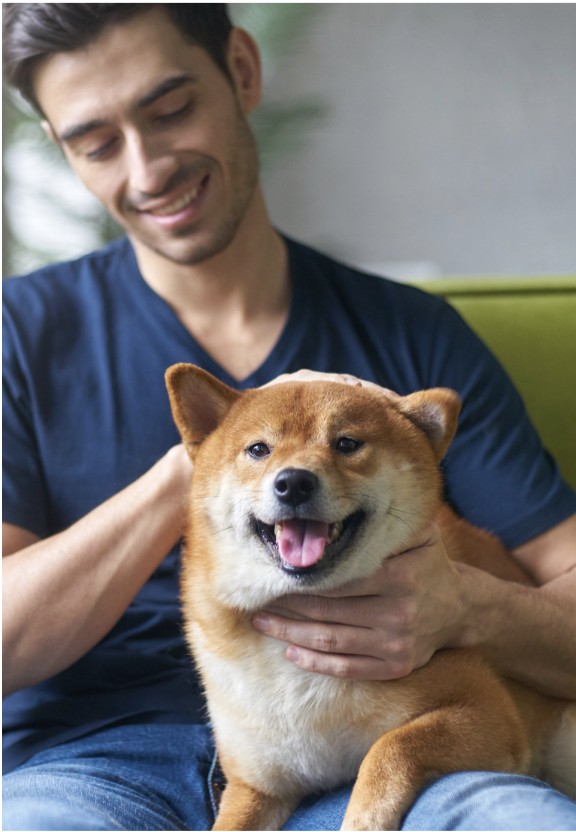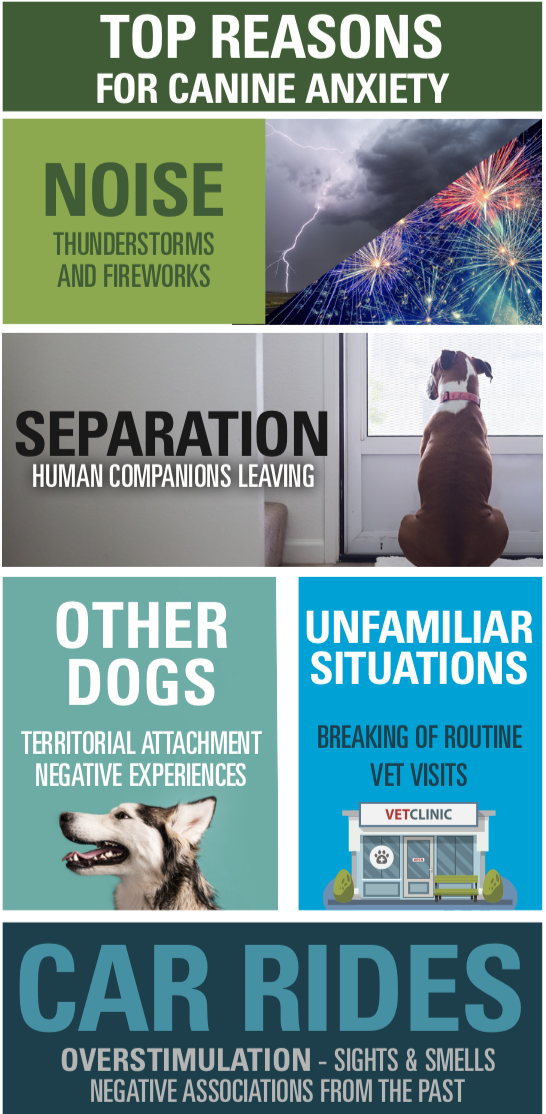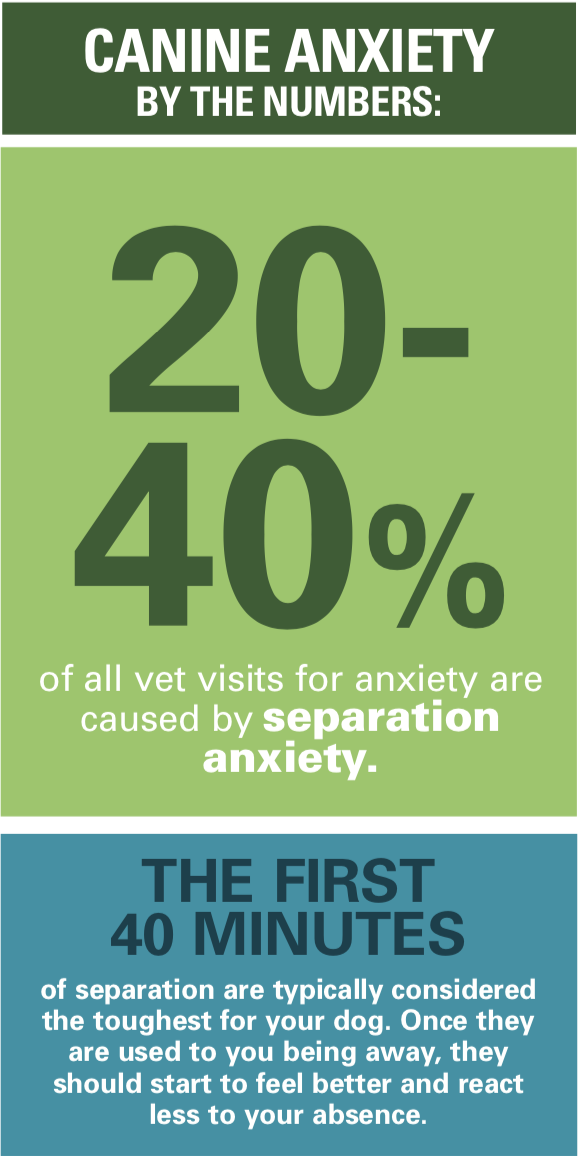
I can tell you that is certainly how it seems with my two canine companions, Bella and Buddy. I’m sure it’s probably the same for you as well. That’s understandable, because the way a canine mind works isn’t that much different than the way ours works. We want the same things – shelter, food, affection, and reassurance.
Canine anxiety is like that, too.
When it comes to anxiety, many of the things that make us nervous or fearful – loud noises that we can’t explain (or are worried that we can explain), health checkups, or being separated from the ones we love and count on – affect dogs the same way. You may have witnessed that loud noises like thunder or fireworks – sounds that may be painful to their ears and unable to control – can make your own dog panic. Or, when your canine companion notices that you’re getting ready for work, or packing for a trip, he or she may start panting or seem agitated while never letting you out of his sight.

Training and Patience is Key
Of course, helping your dog overcome anxiety is also a matter of training. And like many things regarding canines and learning, the training is in many ways, almost more for the human than the dog. Consistency and patience yield the best results.
Most veterinarian and animal behaviorists – and I think most dog owners – find that the more exercise their companion gets, the more relaxed they feel.
In fact, one veterinary article reported that a majority of canine anxiety around noise and separation was in proportion to how much exercise a dog had each day. And what surprised them was that being anxious about noise was even more of an issue than separation.
It makes sense that exercise would be key: the more time that a dog gets to be outside in the fresh air with their human companion, the more serotonin and other neural connections they make. Over time, that typically translates into more resilience when things change – or, in this case, when a thunderstorm swoops in, someone unexpected comes to the door, or another dog trots by on the sidewalk. If anxieties are left unaddressed, older dogs can actually develop more noise anxiety with age. So spending some quality time with your dog out in the world each day will yield positive results, right from the beginning.
Using echinacea doesn’t mean that all problems will evaporate the first week of increased walks, but it does mean that anxieties over thunderstorms, fireworks, you leaving the house, or trips to the vet aren’t permanent conditions.
In conventional practice, it is not unusual for dogs to be prescribed fluoxetine, which is also prescribed as an antidepressant for humans. But fluoxetine can cause a number of nasty side effects: including diarrhea, sluggishness, loss of appetite and sometimes, even more anxiety. Fortunately, you can choose another option, and bolster your dog’s positive training with a specialized extract of Echinacea angustifolia. The one I recommend has shown remarkable results in human clinical studies and can help your canine best friend, too.
While many echinacea species are well known for bolstering the immune system, this specific extract from a specially cultivated plant calms nerves and relieves anxiety.
The path to its discovery came about when researchers at the Hungarian Academy of Sciences were analyzing different species of echinacea. They found that some of the plants contained compounds called alkamides that were known to influence brain chemistry, including cannabinoid receptors.
It turned out that a specific Echinacea angustifolia showed the most effective levels of alkamides in the right ratios to trigger receptors on the brain that relieve anxiety.
Clinical research in humans has found that very effective for reducing anxiety and that the effects remained stable for the duration of the clinical trial and even for two weeks following treatment – all without side effects.
As it turns out, this botanical has the same effects for animals, too. Animals that received the extract were calmer and able to ignore events that would normally induce stressful behavior.
Help Relieve Your Dog’s Anxiety with Love, Patience, Training – and Specialized Echinacea
Our canine companions are incredibly important to us. They show us unconditional love and want us to be happy. And we feel the same. That’s why it’s so tough when they are stressed and we feel like there is nothing we can do about it.
But there is. Enjoy as much time with your dog as possible – none of it is wasted time. Slowly allow your dog to get used to stimuli that may otherwise cause them anxiety, but also be there to reassure them.
I think along with love, patience, and training, this echinacea extract is perfect for dogs that have a hard time being home alone, that don’t like riding in the car, or are terrified of fireworks. I suggest a 20 mg dosage for all dogs, given at least 30 minutes before the event that your dog finds stressful. Along with patience and exercise, I think you’ll find that it is indispensable to helping your canine companion live their best life with tail-wagging confidence.

I would recommend using 20 mg of Narrow-leaved Coneflower (Echinacea angustifolia) Root Extract standardized for echinacoside and a unique, proprietary alkamide profile.
